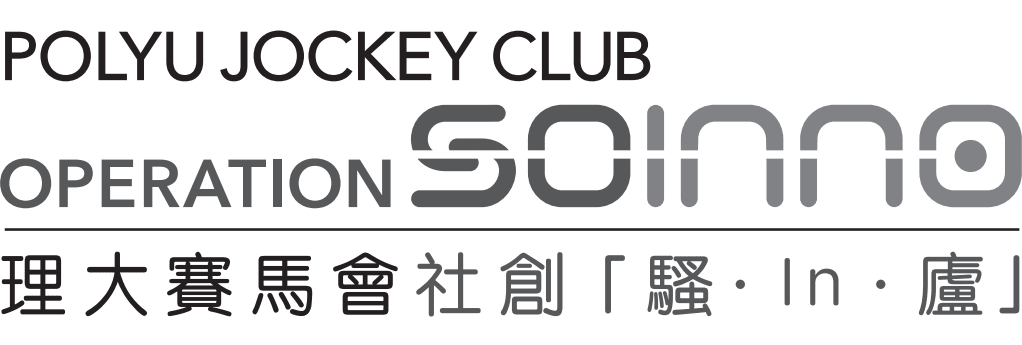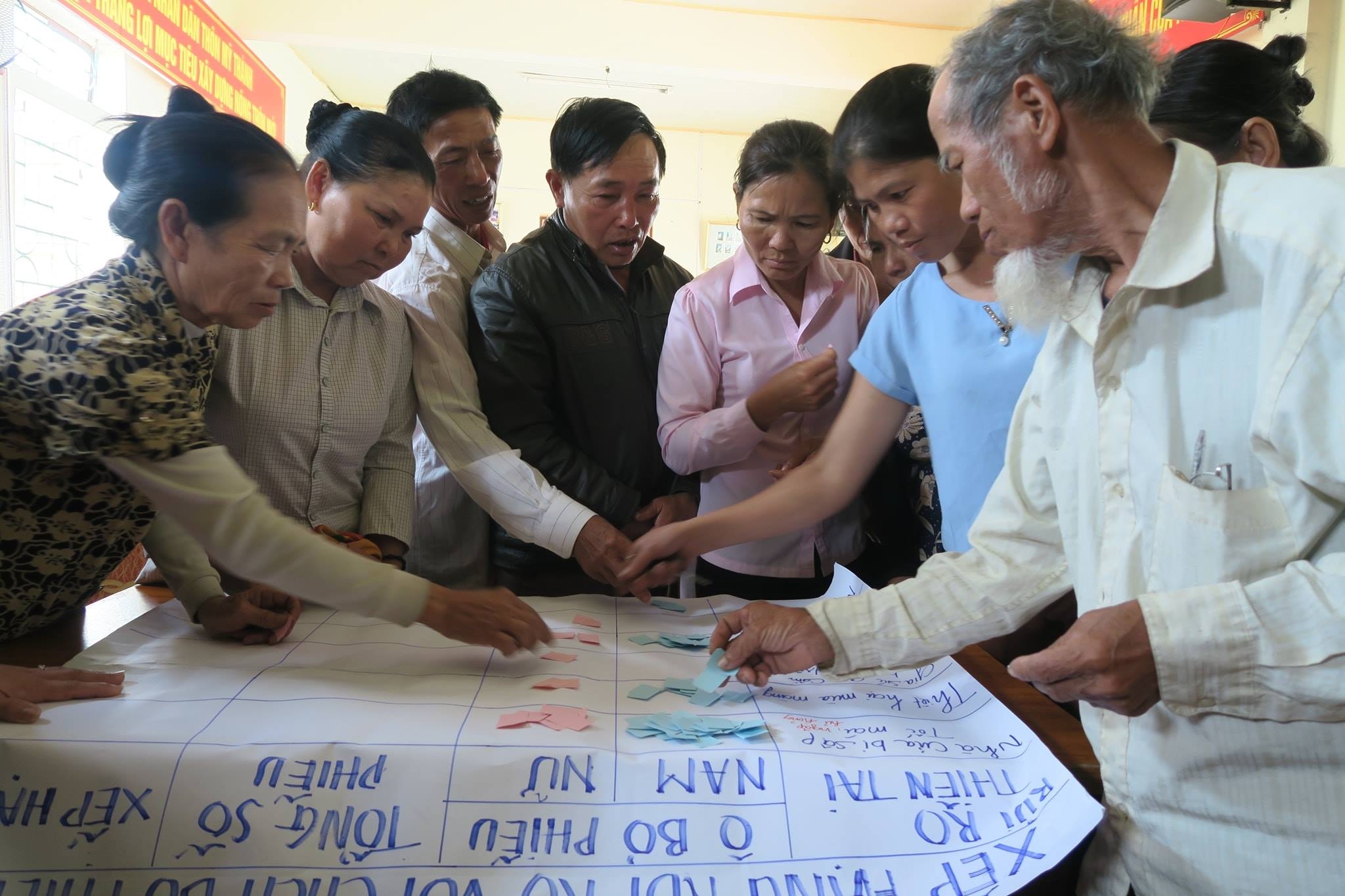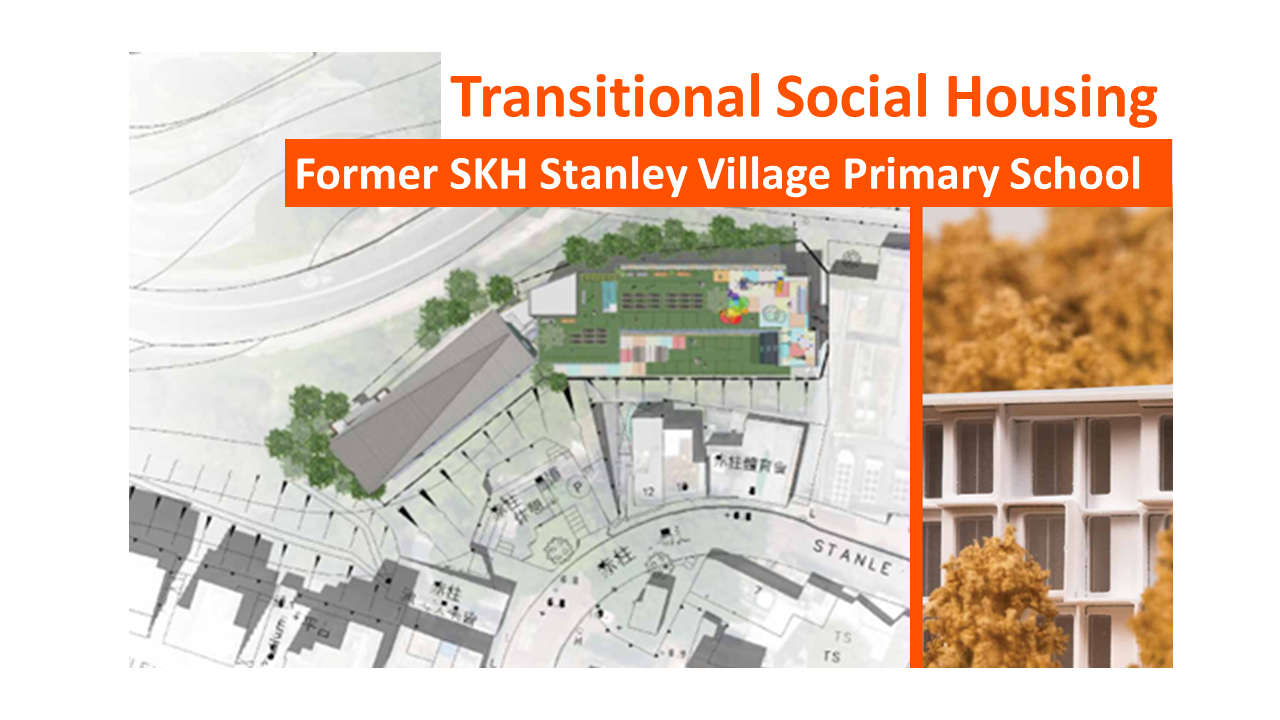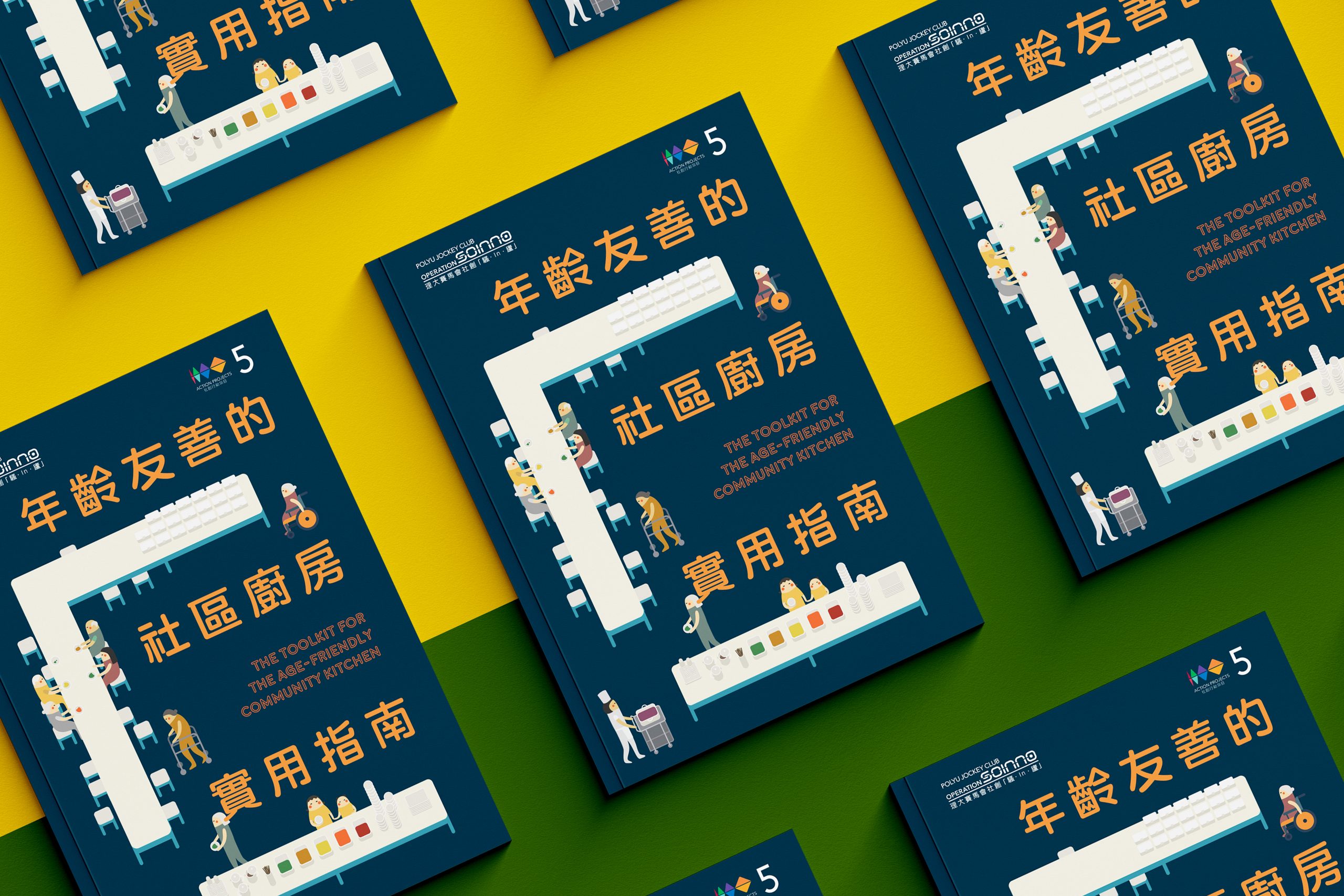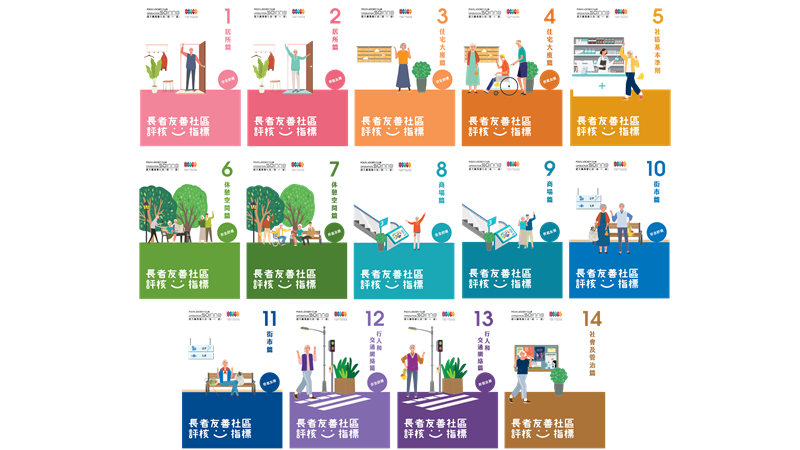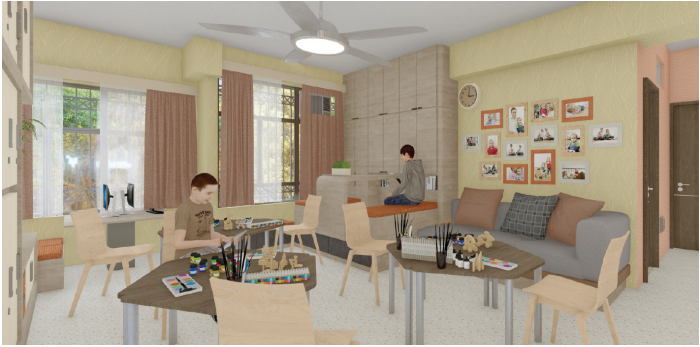OVERVIEW
HelpAge International (HelpAge) has been developing Older People’s Associations (OPAs) in Asia for almost 40 years. During the first 20 years, HelpAge promoted the development of project-focused OPAs, which were associations that aimed to address specific needs and challenges, such as health, homecare and livelihood needs. By 2005, thousands of such project-focused OPAs were established in over 90% of countries in the region.
However, the project teams had some lingering questions: Were OPAs actually meeting the needs of the locals or just meeting the needs of the projects and the donors? What will happen after the project ends? Why wasn’t there any local buy-in to the OPA model?
Aiming to solve the problem, an evaluation and re-design of the OPA model took place in 2005. This time, local communities, partners and authorities were also invited in the process.
THE OUTCOME
The solution aimed to be an advancement of the OPA model. Specifically designed to meet the following goals:
1. To gain strong buy-in from the local community,
2. Projects will be sustainable, and
3. Easily scalable based on the needs
In 2006, OPAs established under this new and improved model were named Intergenerational Self-help Clubs (ISHCs). This new name was recommended by the locals, envisioning that such Clubs will be more inclusive of the current and future old generation. The operation and finance of the Clubs would be managed by the local community, and their scope of work would be decided by community members where they would respond to the actual needs of locals . A wide range of activities would also be offered, such as cultural sharing, mutual support schemes, regular health check-ups and education, community enhancement activities, intergenerational learning, as well as dialogues with local authorities and legal personnel.
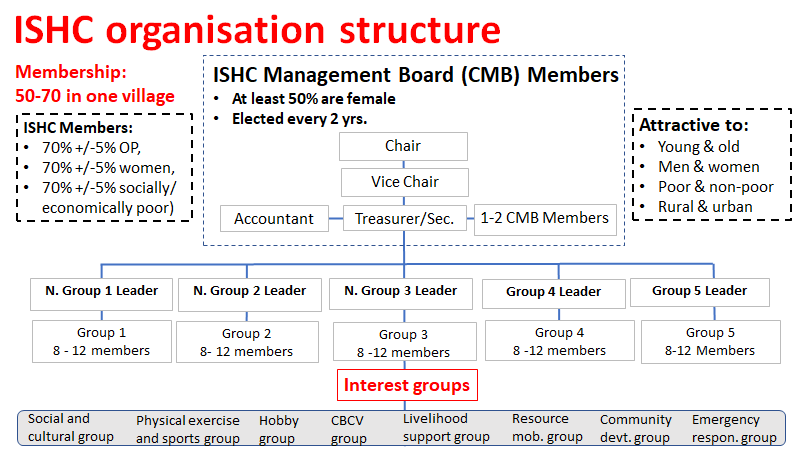
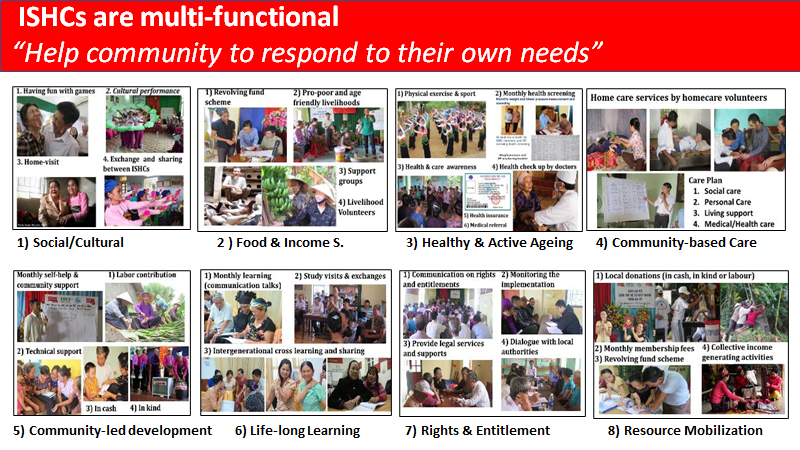
A recent social impact assessment showed that between 2014-2020, ISHCs contributed to a wide range of improvements to individual and community health and wellbeing, including:
- 57.6% average increase in members’ annual income,
- 756 social and cultural groups formed,
- 97.7% of members practice regular exercise, and
- Average 3 health check-ups per year per member
Through continuous lobbying and advocating, the model gained strong support from the Vietnamese government, as they also incorporating the idea of establishing ISHCs as one of their national policy targets. The government also provided ISHC model training for countries in the region since 2015 to support them to adapt the model and make it into something that fits their local culture.
THE PROCESS
Inspiration
Several key issues were identified in the 2005 evaluation of the OPA model, including:
- Projects were overly focused on the donors/project’s requirements,
- Mostly led by project team,
- Lack of local ownership, self-help spirit and sustainability,
- Rely on technology and funding to operate,
- Required long-term support, no clear exit strategy,
- Only stayed at the pilot stage and no evidence of scaling-up, and
- No buy-in from the locals
Senior citizens, community members, local partners and government representatives echoed with some of these issues during the project teams’ visits. While these stakeholders were thankful for the support from the projects, they mentioned that the projects did not meet the locals and the country’s needs, nor an affordable solution.
Ideation
The process of ideating the ISHC model involved multiple stakeholders. The project team invited local partners and community members to design various community-driven development models that they believe would be beneficial for themselves, their community and their country. These ideas were then reviewed and adapted by HelpAge members and local partners.
Several experienced partners of HelpAge, who are also founding members of The Vietnam Women’s Union, were inspired by the ideas. In particular, their proposed model on increasing community happiness, confidence and solidarity, as well as ensuring that projects and activities held would always include an element of fun. Members of the evaluation team agreed with these suggestions and prioritised them as goals for the ISHC model.
Implementation
Initial pilot phases
ISHC is usually initiated when local communities approach partners or HelpAge request support on establishing an ISHC in their community. However, due to the large demand for clubs, selected communities are required to contribute around 20 to 25 million VND per ISHC. This would normally cover 50% of the project co-funding cost, and the remaining half would be covered by HelpAge.
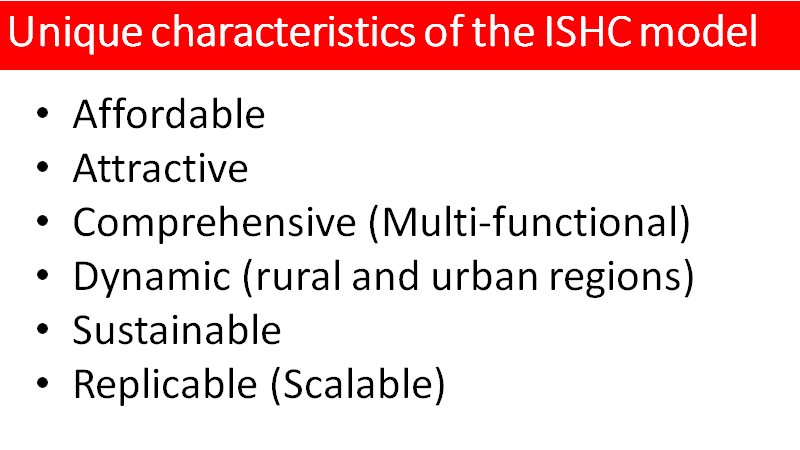
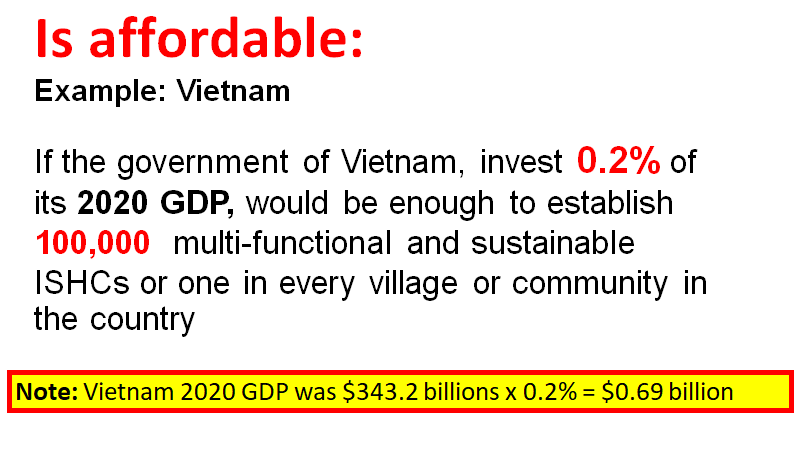
To increase the durability and scalability of the ISHCs, clubs would go through five-stages of training on framework development and skill building, to support them in becoming stronger and more independent, providing a chance for them to register themselves as legal entities within two years.
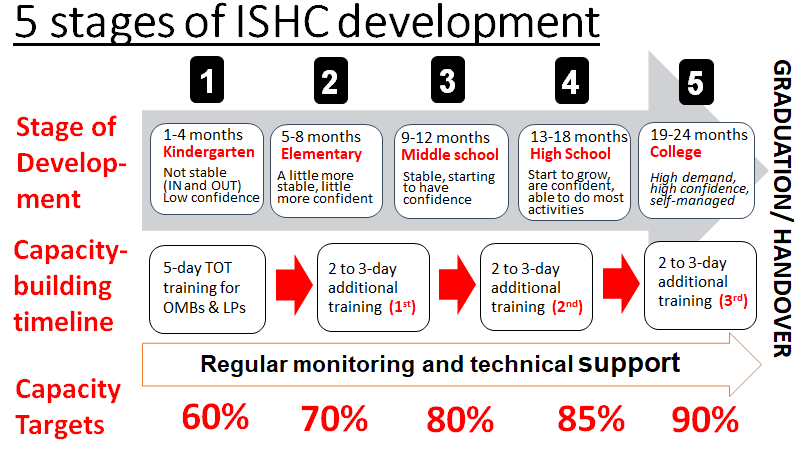
Local partners or HelpAge would provide monthly technical support and guidance, standardised information, education and communication (IEC), materials such as websites, videos and handbooks would also be developed to ensure a quality scale up.
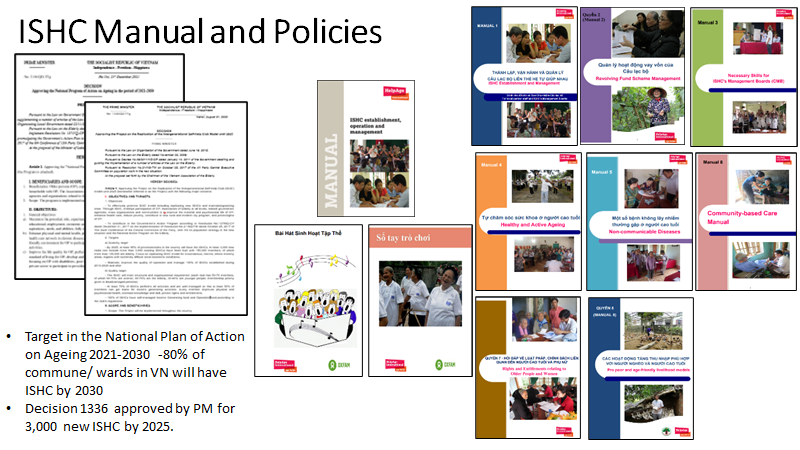
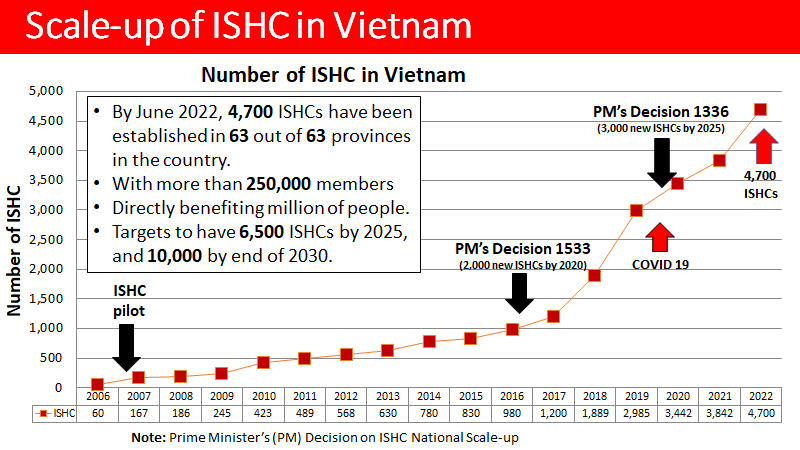
Having said that, three challenges continued to exist when establishing ISHCs:
1) Community members do not think it would work in their communities, province or country
2) Ageism – the assumption that elderly receiving charity alone is good enough
3) People rejecting the traditional development model (Perfect is the enemy of good)

